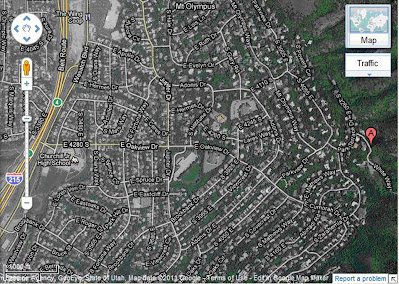For a spectacular view of the Salt Lake Valley that's a little more involved than Ensign Peak, Grandeur Peak provides the perfect vantage point. While this mountain can be accessed anytime of the year, I hiked it during October when the leaves were at their peak in changing color.
There are two common routes you can take to reach the summit of Grandeur Peak. The West Ridge Route, which is the one I haven't taken, can be accessed from 3300 South and Wasatch Boulevard. Head east to stay on Wasatch Boulevard where it will immediately turn north and parallel I-215. Follow Wasatch Boulevard to its end where plenty of parking should be available. The following link has more information:
http://climb-utah.com/WM/grandeur.htm.
 |
| Routes to Grandeur Peak – Map credit: Joseph Bullough |
The Church Fork Route is perhaps the more popular of the two. This is accessed by driving up
Mill Creek Canyon to the Church Fork picnic area, which is just past the Boy Scouts’ Tracy Wigwam area. When I went, there was a fee of $2.25 per vehicle for accessing
Mill Creek Canyon that is paid upon leaving the canyon. I understand that the fee is $3.00 per vehicle now, and an annual pass of $40.00 can be purchased if the canyon is visited frequently. A narrow road winds through the Church Fork picnic area to the trailhead. Parking is limited in this area, so be prepared to park on the main road, if necessary. From the trailhead, the trail heads north along Church Fork and crosses a trail known as the Pipeline Trail. As Church Fork veers to the right (east), the trail goes through several switchbacks before it reaches the crest of the ridge. From here you begin to have a commanding view of
Parleys Canyon and the
Salt Lake Valley. Following the ridge, it’s about another half-mile to the 8,299-foot summit of
Grandeur Peak. Distance from the trailhead to the summit is about 2.7 miles one-way with an elevation gain of approximately 2,350 feet.
 |
View of downtown Salt Lake City
from the summit of Grandeur Peak |
 |
View of Mount Olympus and the Cove
area from the summit of Grandeur Peak |























